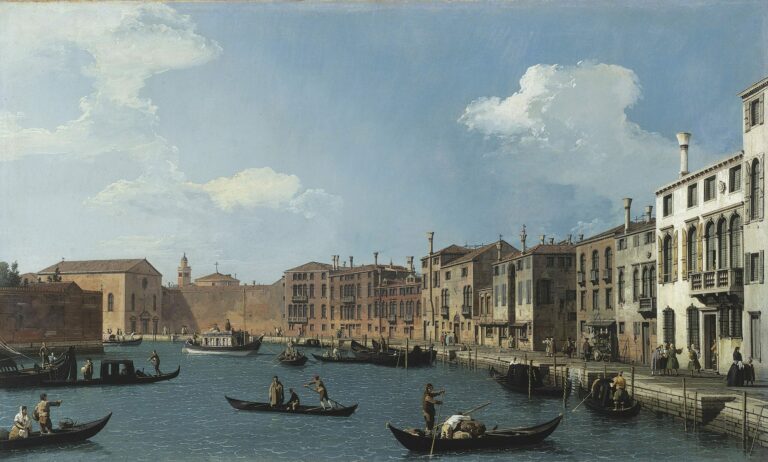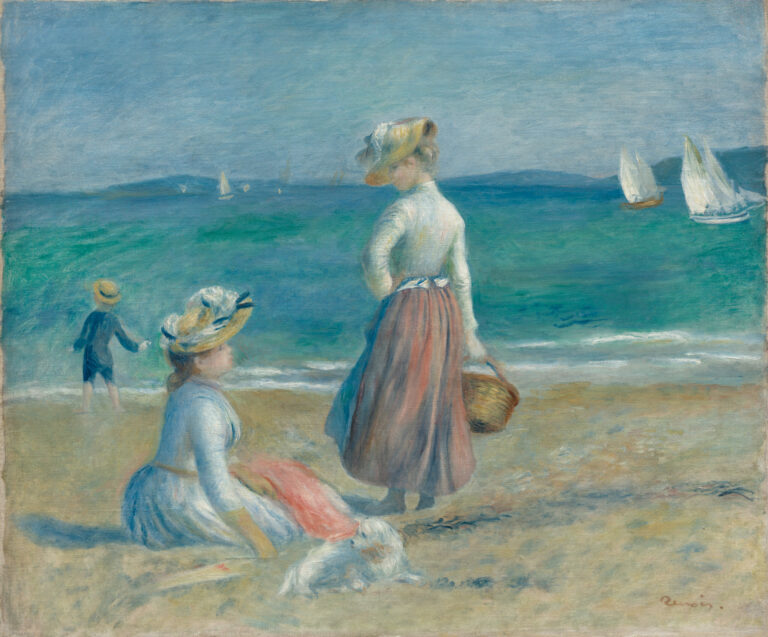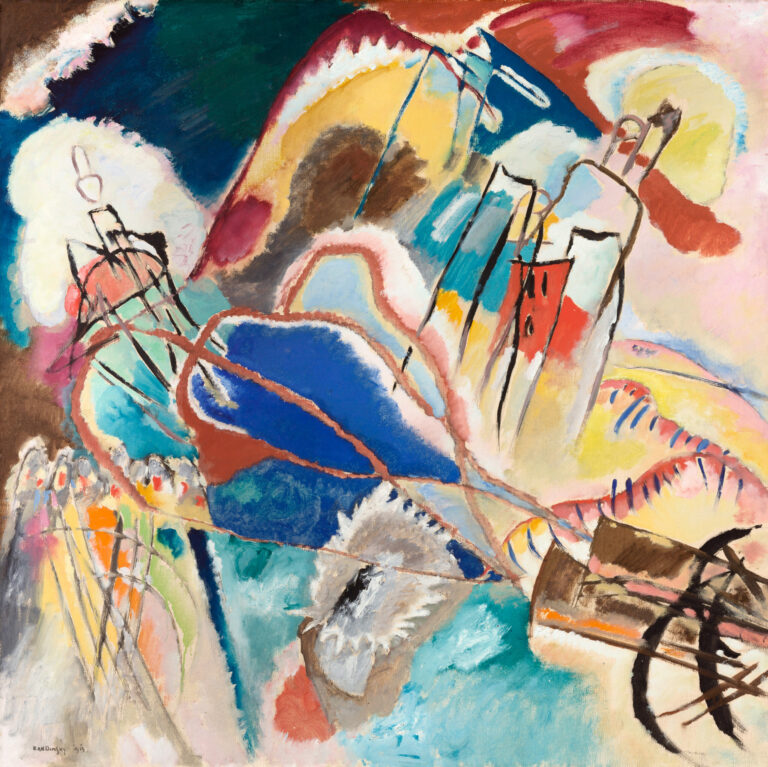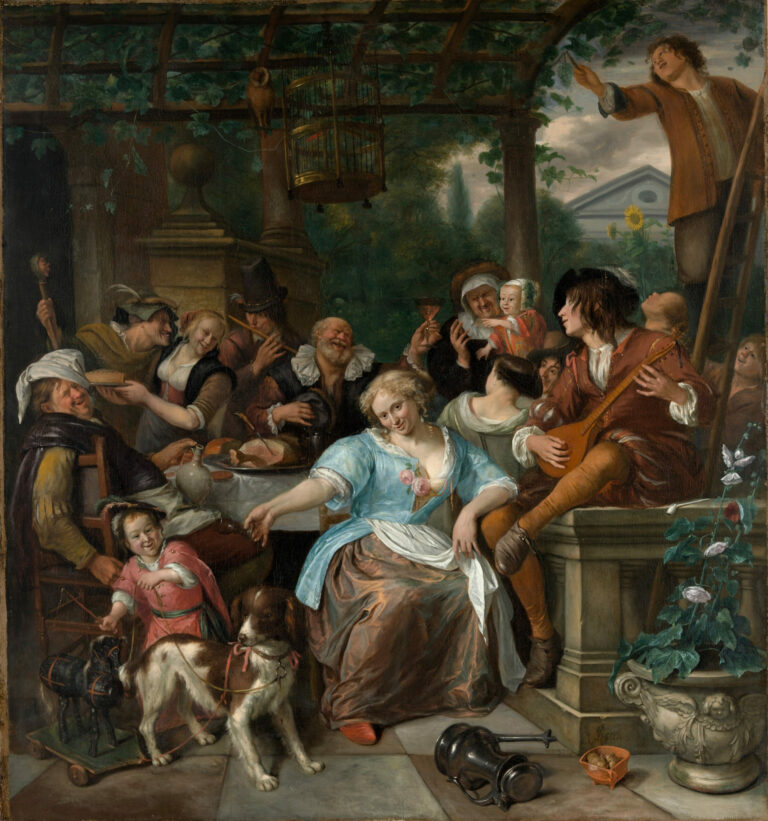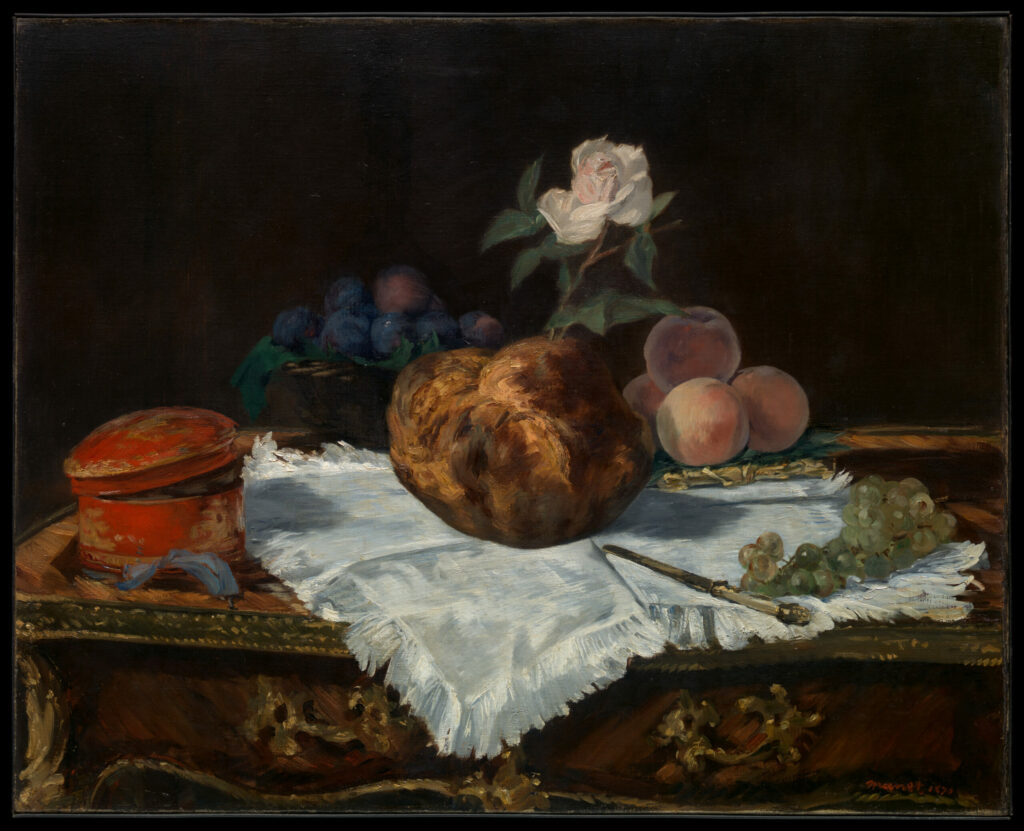
In this still life, Manet presents us with a visual symphony where each element is magnified by his virtuosic touch. “The Brioche” (1870) reveals the painter’s mastery in composition and material rendering. The work was inspired by the donation of a Chardin painting to the Louvre.
At the center of Manet’s canvas sits a golden brioche on a brilliant white napkin, its skillfully orchestrated folds capturing light with remarkable delicacy. The work is enriched by a pale rose, a poetic note crowning the brioche, while around it are arranged juicy fruits—bluish plums, rosy peaches, and translucent grapes. A vermilion red box brings a bold chromatic touch, creating a striking contrast with the dark background. The knife placed on the tablecloth adds a silvery note that subtly guides the eye through the composition.
Further Information
- The Brioche, by Édouard Manet, 1870, The Metropolitan Museum of Art
- 25 5/8 x 31 7/8 in. (65.1 x 81 cm)
- The Metropolitan Museum of Art, Fifth Avenue, New York, displayed in Gallery 810
- https://www.metmuseum.org/art/collection/search/436946
Édouard Manet (1832-1883) was a pivotal figure in the transition between Realism and Impressionism. Though famous for controversial works like “Le Déjeuner sur l’herbe” and “Olympia,” he also excelled in still life painting, a genre he considered “the painter’s touchstone.” This work, inspired by Chardin whose “Brioche” had just entered the Louvre, demonstrates Manet’s ability to reinvent tradition while infusing it with radical modernity. His technique, characterized by visible brushstrokes and a direct approach to color, would profoundly influence the artistic avant-garde.

